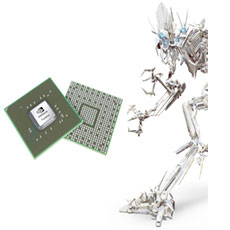The secondary Storage devices and chipset processor.

As you remember, RAM installed on the motherboard is called primary storage. Primary storage temporarily holds both data and instructions as the CPU processes them. These data and instructions are also permanently stored on devices, such as DVDs, CDs, hard drives, and USB drives, in locations that are remote from the CPU. Data and instructions cannot be processed by the CPU from this remote storage called secondary storage , but must first be copied into primary storage (RAM) for processing. Computer repair miami the most important difference between primary and secondary storage is that secondary storage is permanent. When you turn off your computer, the information in secondary storage remains intact. Secondary storage devices are often grouped in these three categories:
- Hard drives
- Optical drives
- Removable storage
The processor or CPU is the chip inside the computer that performs most of the actual data processing. The processor could not do its job without the assistance of the chipset, a group of microchips on the motherboard that control the %uFB02ow of data and instructions to and from the processor. The chipset is responsible for the careful timing and coordination of activities. The chipset is an integrated component of the motherboard and is contained in two packages embedded on the motherboard. We discuss various types of computers, but we focus on the most common personal computers (PCs); PCs often are referred to as IBM-compatible. These are built around microprocessors manufactured by Intel Corporation and AMD.
The Macintosh family of computers, manufactured by Apple Computer, Inc., was formerly built around a family of microprocessors, the PowerPC microprocessors, built by Motorola and IBM. Currently, Apple computers are built using Intel processors, you saw two kinds of storage, temporary and permanent. The processor uses temporary storage, called primary storage or memory, to temporarily hold both data and instructions while it is processing them. However, when data and instructions are not being used, they must be kept in permanent storage, sometimes called secondary storage, such as a hard drive, CD, DVD, or USB drive. Primary storage is much faster to access than permanent storage. In our analogy, suppose you must do some research at the library.
You go to the stacks, pull out several books, carry them over to a study table, and sit down with your notepad and pencil to take notes and do some calculations. When you’re done, you leave with your notepad full of information and calculations, but you don’t take the books with you. In this example, the stacks are permanent storage, and the books data and instructions are permanently kept there. The table is temporary storage, a place for you to keep data and instructions as you work with them. The notepad is your output from all that work, and you are the CPU, doing the work of reading the books and writing down information. You kept a book on the table until you knew you were finished with it. As you worked, it would not make sense to go back and forth with a book, returning and retrieving it to and from the stacks. Similarly, the CPU uses primary storage, or memory, to temporarily hold data and instructions as long as it needs them for processing.
Memory your table gives fast but temporary access, while secondary storage the stacks gives slow but permanent access. Primary storage is provided by devices called memory or RAM random access memory located on the motherboard and on some adapter cards. RAM chips are embedded on a small board that plugs into the motherboard. These small RAM boards are called memory modules, and the most common type of module is the DIMM dual inline memory module. There are several variations of DIMMs, and generally you must match the module size and type to that which the motherboard supports. Miamicomputerrepairsite.com knows that video cards contain their own memory chips embedded on the card; these chips are called video memory. Whatever information is stored in RAM is lost when the computer is turned off, because RAM chips need a continuous supply of electrical power to hold data or software stored in them. This kind of memory is called volatile because it is temporary in nature. By contrast, another kind of memory called non-volatile memory, holds its data permanently, even when the power is turned off. Non-volatile memory is used in Flash drives, memory cards, and some types of hard drives.
 Steven, L.
Steven, L.










